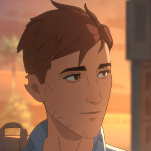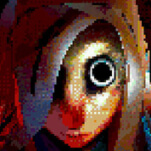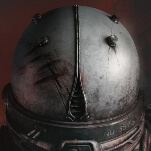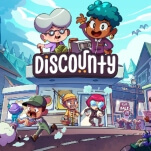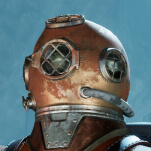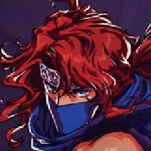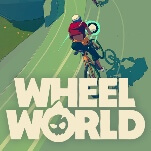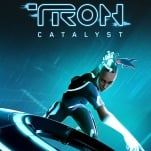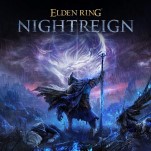Ambrosia Sky Is An Immersive Sim About Fighting Alien Fungus That Mostly Cleans Up Okay
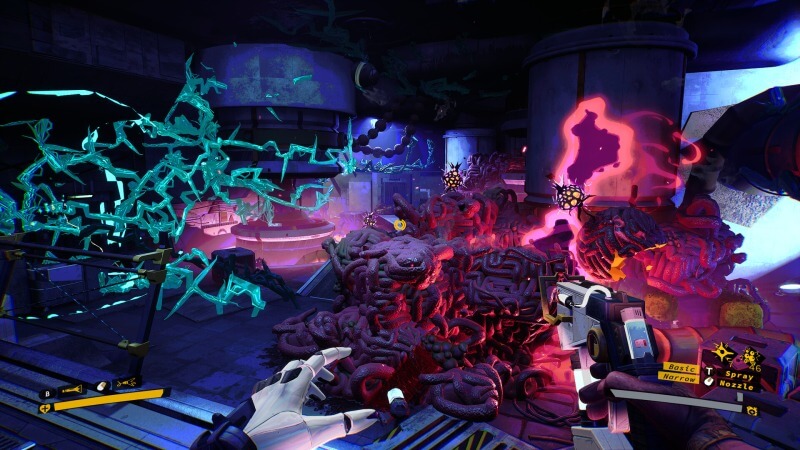
Space, the final frontier. Home to countless sci-fi yarns that have taken us across the cosmos while following explorers, soldiers, scientists, smugglers, and every other flashy job in between. And now, thanks to act one (out of three) of Ambrosia Sky, you can add space mortician to the list.
While that gig sounds gloomy (and it sometimes is), the moment-to-moment of Soft Rains’ debut conjures a different vibe than this occupation would suggest, having you fight your way through psychedelic space fungus in immersive sim styled levels, as you clean away this place’s sins (and also the space fungus with a power washer). Altogether, it makes for an evocative trip with a unique central loop, even if repetition begins to set in before the job is done.
You play as Dahlia. She’s a member of the Scarabs, an enigmatic research group looking for the secret to immortality. As part of this quest, Dahlia is tasked with gathering DNA from recently deceased humans. Unfortunately for her, her latest assignment takes her someplace she’s been avoiding: home. Forced to return to the colony she grew up in, one dedicated to fungus farming that feeds what remains of humanity, Dahlia is forced to confront her past as she uncovers what went wrong here.
As for how that translates to the player, the game is built around a series of missions that take Dahlia through different parts of this space station. In some levels, she needs to do the main thing in her job description: lay people to rest while extracting their genetic data. This is rarely simple, though, as these dead bodies are usually hidden amid winding corridors and behind colonies of alien fungus. Beyond this, Dahlia will also find herself searching for seeds—again, this devastated farming colony was the bread basket for what remains of humankind—as well as harvesting the organs of dead alien gods. She’d better be earning some hazard pay for all that.
Each level is designed as an interconnected maze of locked doors and hidden air ducts, letting you move through these areas via different paths. The somewhat open-ended approach here is quite a boon, and exploring this moody space is perhaps the game’s greatest delight: it leaves behind the sterile whites found in many of its sci-fi peers for something far trippier and more interesting, with a space station that is all purples and deep maroons. The art style is suitably stylized, less photo-realistic, and more defined by exaggerated shapes and wonderfully off-kilter character designs that communicate a speculative strangeness.
Another idiosyncrasy is that, unlike most immersive sims, you won’t be taking out goons with a silenced pistol, but fighting a different kind of battle: the battle of cleanliness. This colony was wiped out by a rampant fungus that mutated into several dangerous forms, like variants that crackle with electricity or explode if you get too close. Sure, there are also these little slug guys (unrelated to the fungus) who will spit acid at you, but they’re honestly more of a sideshow compared to the rapidly spreading mycelium.
As this setup would imply, the game draws on titles like PowerWash Simulator, but with a futuristic twist. To hose down fungus, you utilize a powerful spray hooked up to several nozzles, blasting away layers until only squeaky clean steel remains. However, you’ll need to be careful, because there are fruit growing from these fungal colonies that can be harvested for resources, but only if you slice them clean with some degree of finesse.
On the one hand, these cleaning mechanics draw on the brain-scratching pleasure found in plenty of other games about washing away gunk. It is simply satisfying to spray everything down until it’s clean, slicing through with a variety of nozzle options that you can tinker with to meet the current threat. For players like myself, it very much helps that this cleaning gameplay is structured around other objectives beyond simply tidying up—you can spend minutes or hours blasting away every trace of grit and grime, but you certainly don’t need to in order to accomplish your mission. Oh, and it doesn’t hurt that the game has one of the best tethers in recent memory, letting you propel through environments with reckless abandon, something that’s particularly helpful when spraying things down in zero-G.
-

-

-

-

-

-

-

-

-

-

-

-

-

-

-

-

-

-

-

-

-

-

-

-

-

-

-

-

-

-

-

-

-

-

-

-

-

-

-

-





